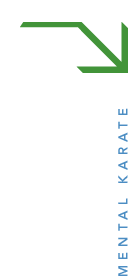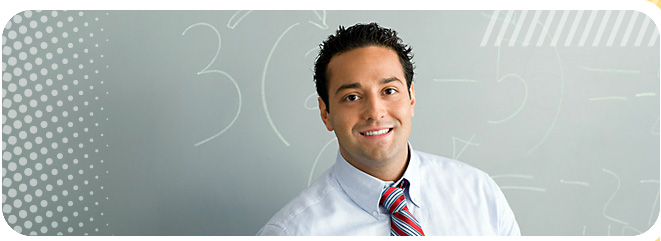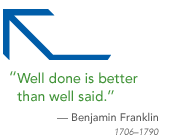 |
 |
What does it mean to truly inspire a young person?
From Words to Action
By Mawi Asgedom
The Challenge
Have you ever heard the following statements: "Take control of your mind; You need a winning attitude; If you put your mind to it, you can do anything?"
I'm pretty confident that most of us have heard many variations of these statements. But what does it mean to "Take control of your mind?" Think about a 13-year-old being told by a teacher or a parent, "Your mind has unlimited power." What does that statement mean to the student?
Unfortunately, as good as they sound, vague platitudes such as "Take control of your mind" do little to help our young people develop their internal skills. Most young people need us to show them HOW to take control of their minds, a much harder task than simply telling them to do so.
Let's take a step back and examine how U.S. schools generally handle internal development/character education. Without a doubt, most schools recognize the importance of mindset. We find in almost every school, a Citizenship Day, or a Character Counts Committee, or a community outreach event such as a food drive. We also find posters around the school extolling the value of hard work, respect, positive attitude, etc. No one can deny that our schools’ various efforts deserve recognition.
By and large, however, schools fall far short of actually showing students how to develop internally, and actually GUIDING them to any significant level of inner mastery. Why? Why it is so hard to provide effective inner education?
In my work with more than 1000 schools and 500,000 students this past decade, I've identified the following three key obstacles to teaching internal development/character education. These three obstacles can be overcome to show students how to really “take control of their minds†and instill the confidence, discipline, and self-respect necessary for academic and personal success.
The first obstacle is that the very concept of inner development is hard to measure. I can tell whether you answered a math problem correctly or whether your English paper was written well. But how do I measure 4 units of initiative or 8 units of perseverance. What does a 93% for character mean? Because it's hard to measure and there's no definitive paradigm that conclusively defines inner development, schools often seesaw between different approaches. Let's learn about courage day. Two months from now, let's do goal setting. Let’s bring in a speaker on diversity. All these efforts are indeed laudable, but they lack a precise, logical methodology that gives students a clear, comprehensive structure for understanding their internal powers and how those internal powers can help them in their daily lives.
Second, related to the first point, there's often a limited sense of progression. In math, we know that a student should progress from addition to subtraction to multiplication to division, then fractions and decimals and so forth. In writing, we know they should learn the alphabet, basic print, then cursive, basic grammar and spelling, advanced reading and writing, and so forth. But what is the progression for students when it comes to inner development? Should they learn goal-setting first, then initiative, then courage? Most schools cannot draw a ladder that shows a natural inner progression that builds students toward a comprehensive end goal. Without an end goal, without a logical progression to guide them, students progress either randomly, or not at all.
Finally, and most problematic, there is usually a gaping chasm between theory and action. Students who learn about courage or goal-setting today are rarely pushed in a systematic, organized manner to implement their new learning the following week or even the next day. Hence, short-term initiatives such as Citizenship Days or one-time inspirational speakers often don't translate into consistent, improved action by students. We would never teach core subjects like Math and Reading without consistency, demonstration, independent practice, and assessment. Internal development requires the same modeling, implementation, practice, review, and analysis.
Despite these formidable challenges, now, more than ever, students must understand what it truly means to take control of their minds. Students live in a world where corporations spend tens of billions to influence what students eat, drink, watch, wear, hear, and consume. Adolescents are tempted and pulled off course by well-meaning and not so well-meaning peers during the turbulence of the tween and teen years. Young adults exit school and have to navigate short-term jobs, mercurial careers, and companies that move abroad or go out of business. In today's complex, ever-shifting world, the abilities to take initiative, set goals, contribute, self-reflect, and persevere, aren't just matters of success or democratic citizenship; they're matters of basic survival.
I've thought long and hard about how I can help students progress internally in a logical, structured, action-oriented manner. I've struggled, I've gone back and forth, and finally, after a decade, I've developed a system that I believe will challenge our youth to truly "unlock the power within." I call it Mental Karate. My hope and dream is that Mental Karate will spark students on a life-long journey of self-discovery that will result in infinite possibilities.
Mental Karate: Beyond Character Ed to Character Action
Before proceeding, let's take a moment to examine how martial arts are typically structured.
First, there's a clear methodology that delineates progression from belt to belt. The end goal is also clear: Black Belt. There's no separation between theory and action - students can only progress though actions that demonstrate their mastery (i.e. break a board). And of course, there's an understanding that the journey from white to black belt is a transformative, empowering process, giving one skills that last a lifetime.
Note that the martial arts structure addresses the character education challenges I described earlier relating to progression, methodology and action. So why can't we borrow the karate structure to challenge students to develop internally and to progress from belt to belt by mastering inner competencies and capabilities? Certainly, our intrinsic powers are as powerful as any external kick or punch we can master.
Mental Karate, then, is a simple, structured, action-oriented system that helps students unlock their internal capabilities. Students progress from white to yellow to green to blue to black belts by developing competencies, respectively, in the areas of initiative, discipline, contribution, courage, and awareness. The only way students can progress is by taking action connected to each principle.
For example, to earn their white belt, students must demonstrate a basic mastery of initiative. To demonstrate their competency, students identify five substantial ways that they can demonstrate initiative and document themselves taking action. Initiative can be taken at school, home, a place of worship, in the community, with siblings, etc.
As you continue to think about the best way to inspire your students, let me ask you a simple question: What would be more transformational for 200 students?
Character Education
An inspiring speech or book about their inner potential.
Character Action / Mental Karate
A journey, where students collectively take 1000 acts of initiative, show discipline for 9000 days, contribute to their families and communities in 800 ways, exhibit courage in 1000 ways, and show heightened mental awareness for 6000 days.
If you said Character Action, you can provide Mental Karate for only $975 to your entire school today.
|
 |






